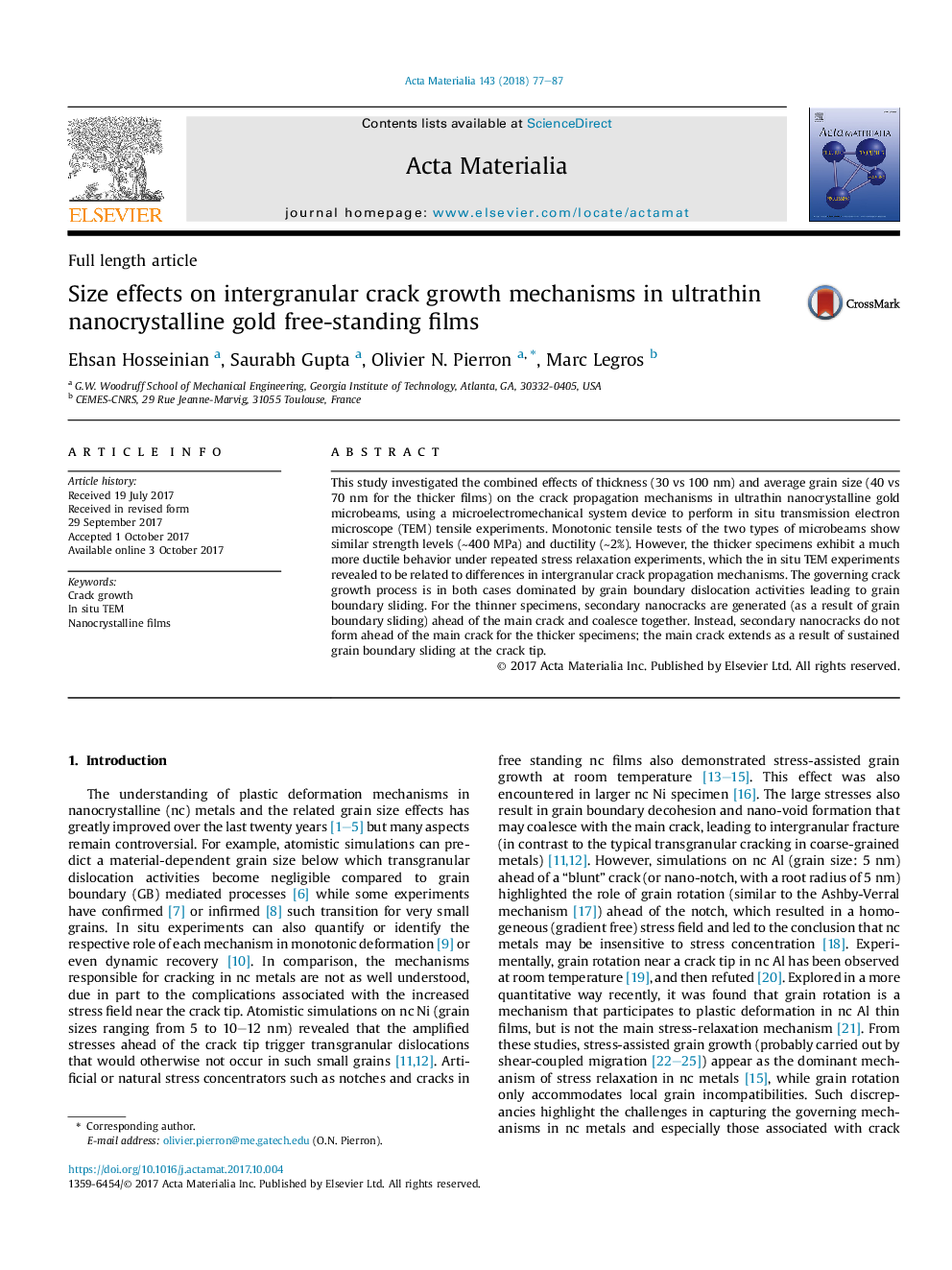| Article ID | Journal | Published Year | Pages | File Type |
|---|---|---|---|---|
| 5435683 | Acta Materialia | 2018 | 11 Pages |
This study investigated the combined effects of thickness (30 vs 100Â nm) and average grain size (40 vs 70Â nm for the thicker films) on the crack propagation mechanisms in ultrathin nanocrystalline gold microbeams, using a microelectromechanical system device to perform in situ transmission electron microscope (TEM) tensile experiments. Monotonic tensile tests of the two types of microbeams show similar strength levels (â¼400Â MPa) and ductility (â¼2%). However, the thicker specimens exhibit a much more ductile behavior under repeated stress relaxation experiments, which the in situ TEM experiments revealed to be related to differences in intergranular crack propagation mechanisms. The governing crack growth process is in both cases dominated by grain boundary dislocation activities leading to grain boundary sliding. For the thinner specimens, secondary nanocracks are generated (as a result of grain boundary sliding) ahead of the main crack and coalesce together. Instead, secondary nanocracks do not form ahead of the main crack for the thicker specimens; the main crack extends as a result of sustained grain boundary sliding at the crack tip.
Graphical abstractDownload high-res image (343KB)Download full-size image
